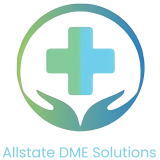
The landscape of the medical supplies industry has undergone a profound transformation in recent times. From the pre-COVID era to the present, the demand for medical supplies has witnessed significant shifts, prompting businesses to reassess and adapt their strategies. In this article, we will explore the evolution of medical supply demand, current trends, challenges faced by businesses, and effective strategies to navigate this dynamic environment.
Evolution of Medical Supply Demand
Pre-COVID Era
In the years preceding the global health crisis, the demand for medical supplies was relatively stable. Businesses operated within established norms, and the focus was primarily on meeting the regular needs of healthcare facilities and professionals.
Impact of Global Health Crises
The emergence of global health crises, such as the COVID-19 pandemic, brought unprecedented challenges. The sudden surge in demand for medical supplies, particularly Personal Protective Equipment (PPE) and ventilators exposed vulnerabilities in the supply chain and highlighted the need for adaptive business strategies.
Current Trends in Medical Supplies
Telehealth Technologies
The increasing adoption of telehealth technologies has reshaped the landscape of medical services. As virtual consultations become more common, there is a growing demand for remote patient monitoring devices and other technological solutions.
Personal Protective Equipment (PPE)
The ongoing need for PPE remains significant, not only in healthcare settings but also in various industries. Businesses catering to the production and distribution of high-quality PPE continue to experience sustained demand.
Remote Monitoring Devices
Advancements in remote monitoring devices have facilitated the shift towards preventive and remote healthcare. Businesses exploring opportunities in this sector can tap into the growing demand for innovative solutions.
Challenges Faced by Businesses
Supply Chain Disruptions
The pandemic exposed vulnerabilities in global supply chains. Businesses faced challenges related to the sourcing of raw materials, manufacturing delays, and transportation disruptions. Adapting to a more resilient supply chain is crucial.
Fluctuating Consumer Demands
The unpredictable nature of global health crises has led to fluctuating consumer demands. Businesses must remain agile and responsive to changes in market needs to ensure sustained growth.
Strategies for Adapting Business Models
Diversification of Product Offerings
Diversifying product offerings can help businesses mitigate risks associated with dependence on specific products. Exploring new markets and introducing complementary products can contribute to long-term sustainability.
Embracing E-commerce Platforms
The digital landscape has become integral to business success. Embracing e-commerce platforms allows businesses to reach a broader audience and streamline distribution channels.
Strengthening Supply Chains
Investing in robust supply chain management is imperative. Collaborating with reliable suppliers, adopting technology for real-time tracking, and implementing risk mitigation strategies enhance supply chain resilience.
Technological Integration in Healthcare
Internet of Things (IoT)
The integration of IoT in healthcare presents opportunities for real-time data monitoring and management. Smart devices enhance efficiency and contribute to better inventory control.
Artificial Intelligence (AI) in Inventory Management
AI-driven inventory management systems optimize stock levels, reduce wastage, and improve overall efficiency. Businesses incorporating AI technologies gain a competitive edge in the evolving market.
Regulatory Compliance and Quality Assurance
Keeping Abreast of Industry Standards
Remaining updated on regulatory requirements ensures compliance and instills confidence in customers. Businesses should stay informed about evolving standards in the medical supplies industry.
Ensuring Product Safety
Prioritizing product safety is non-negotiable. Rigorous quality assurance processes and adherence to industry standards build trust and credibility in the market.
Building Resilience in Business Operations
Collaboration and Partnerships
Collaborating with other businesses, research institutions, and healthcare providers fosters resilience. Shared resources and expertise contribute to a more robust operational framework.
Scenario Planning
Anticipating potential disruptions through scenario planning allows businesses to proactively address challenges. Developing contingency plans ensures a swift response to unforeseen circumstances.
Investing in Research and Development
Continuous innovation is key to adapting to changing market dynamics. Investing in research and development ensures that businesses stay ahead of the curve and deliver cutting-edge solutions.
Case Studies of Successful Adaptation
Companies that Pivoted Effectively
Examining case studies of companies that successfully pivoted during crises provides valuable insights. Learning from their strategies and outcomes can inspire effective adaptation.
Lessons Learned
Identifying key lessons from past challenges enables businesses to build resilience. Understanding the importance of flexibility and adaptability contributes to long-term success.
Future Outlook for Medical Supply Demand
Anticipating Trends
Staying ahead of emerging trends is crucial for sustained success. Businesses that anticipate shifts in demand and proactively innovate are better positioned to thrive in the evolving landscape.
Preparing for Unknowns
While it’s impossible to predict every future challenge, businesses can prepare for the unknown by fostering agility, building strong partnerships, and investing in adaptive technologies.
Conclusion
Adapting to the changing demands in the medical supplies industry requires a proactive and strategic approach. Businesses must embrace technological advancements, fortify supply chains, and stay attuned to regulatory changes. By learning from past challenges and incorporating innovative solutions, companies can navigate uncertainties and position themselves for long-term success.
FAQs
- Q: How can businesses stay resilient in the face of supply chain disruptions?
- A: By collaborating with reliable partners, investing in technology for real-time tracking, and developing robust contingency plans.
- Q: What role does e-commerce play in the current medical supplies market?
- A: E-commerce platforms enable businesses to reach a broader audience and streamline distribution channels.
- Q: Why is diversifying product offerings essential for businesses in the medical supplies industry?
- A: Diversification helps mitigate risks associated with dependence on specific products and opens up new market opportunities.
- Q: How can businesses ensure continued compliance with industry standards?
- A: Regularly updating knowledge on industry standards and implementing rigorous quality assurance processes are crucial for ensuring compliance.




